G. L. Pease
 Welcome back. This edition of Ask G.L. Pease marks the one year anniversary of this column. It’s hard to believe how quickly time has flown by, and even harder to believe that after all this time, the questions still come in. Years ago, in response to the beginnings of a new on-line forum, someone asked, "How much can anyone say about pipes and tobacco? It’s just pipes and tobacco, right? What’s so interesting about that?" Well, that forum is still going strong, and people continue to be interested in this lively pastime of ours in a way that goes beyond just puffing on a pipe. And, this magazine continues to grow, with new readers finding their way here daily.
Welcome back. This edition of Ask G.L. Pease marks the one year anniversary of this column. It’s hard to believe how quickly time has flown by, and even harder to believe that after all this time, the questions still come in. Years ago, in response to the beginnings of a new on-line forum, someone asked, "How much can anyone say about pipes and tobacco? It’s just pipes and tobacco, right? What’s so interesting about that?" Well, that forum is still going strong, and people continue to be interested in this lively pastime of ours in a way that goes beyond just puffing on a pipe. And, this magazine continues to grow, with new readers finding their way here daily.
Clearly, there are still things to say about pipes and tobacco, and clearly, the culture of the pipe is alive and well, something special that transcends the tools and fuels that keep our tobacco embers smoldering, and our fires burning. It’s more than just burning leaves in blocks of wood with a couple holes and a straw.
I wouldn’t be writing this if I wasn’t passionate about this stuff, and you wouldn’t be reading it if you weren’t. I’m deeply grateful to be able to do what I do, and have an audience for both my blends and my words. Without you, I would have had to find another way to earn my keep years ago. So, with my sincerest thanks blown in fragrant smoke rings to the four winds, let’s go to the callers.
From Scott: With apologies for making this a G.L. Pease specific inquiry, as a long time Pease tobacco aficionado and groupie, I must ask Greg a question about the soon-to-be-released Sextant blend. I get downright misty in my recollections of the discontinued blend Mehpisto; my all time favorite tobacco. The description of Sextant is intriguing, most particularly in its use of rum, a flavor component of Mephisto. Is it possible that the Sextant blend will in any way harken back to Mephisto? I have an aging, unopened package of Mephisto from 2003 that I would love to tear into if I knew I was able to find a satisfactory replacement. Thank you!
A: No apologies necessary. As Sextant was only recently released, I suppose it’s still newsworthy, and a question or two about it certainly can be squeezed into this space. (I’ll leave it to our illustrious editor-in-chief to decide whether or not that’s really the case. If you don’t see this, it’s not my fault.)
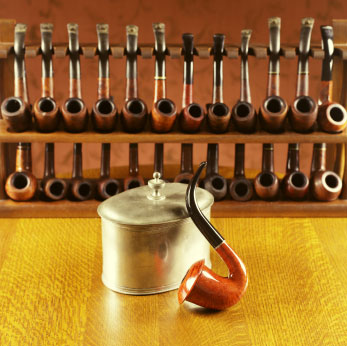 Mephisto was the original inspiration for Sextant, yes, and in some ways, it’s fair to consider Sextant to be an homage to its predecessor, but we (that would be the editorial "we," since Sextant really can’t speak for itself) took a left turn somewhere around Hoboken.
Mephisto was the original inspiration for Sextant, yes, and in some ways, it’s fair to consider Sextant to be an homage to its predecessor, but we (that would be the editorial "we," since Sextant really can’t speak for itself) took a left turn somewhere around Hoboken.
As I was working on this, it became increasingly clear that it’s really impossible to recreate that same flavor profile without the inclusion of the Syrian leaf that, even in the small quantities used, offered unique characteristics. Its smokiness is quite different from that of the Cyprian leaf, and there’s an added piney note that cannot be replicated with any other leaf, though I thought I might get close by playing with the Kentucky dark-fired and a different balance of Orientals, Cyprian Latakia and Virginias.
In exploring different compositions, the new blend seemed set on taking on a life of its own, demanding to be recognized for what it was becoming, not wanting to be relegated to the position of some sort of third cousin to a long dead predecessor. So, though still informed by my own memories of Mephisto, and reminiscent of it in some ways, Sextant grew up to be quite different. They do share some of the same smoky, savory quality, and the constituent tobaccos are similar, but they have two very distinct personalities. That said, I think that if you liked Mephisto, you’ll enjoy Sextant as well, providing you accept it on its own merits.
It’s quite strange to be in the position of creating an homage to one of my own old blends, and I found the process fascinating, frustrating, and rewarding, all at once. I’m really pleased with the results, and if the early reviews are any indication, others are too.
Tony queries: Mr. Pease, most people see English blends as containing Latakia to some degree. May I be so bold, almost blasphemous, (forgive me but the thought came up), as to ask if JackKnife is considered an English style blend since it has no added flavoring?
A: It depends on which side of the puddle you’re on when you ask the question. Of course, the internet has done much to bridge the linguistic gap (George Bernard Shaw referred to England and America as, "Two countries, separated by a common language"), it might be helpful to consider something of the history of the term "English blend."
The old English purity laws forbade blenders from using artificial flavorings and adulterants in tobaccos in large measure. There was a list of approved additives, which had to be dissolved in alcohol or water, and could only be applied at small percentages. This left the blenders, who relied primarily on Virginia-type tobaccos, Orientals and condiment leaf, like Latakia and Perique, with the exciting task of using the tobaccos themselves, along with different processing techniques, such as stoving, toasting, panning, steaming, pressing and so on, to create mixtures that would stand out from their peers. Some of what we now characterize as the classic "English flavorings" that derive from flower essences, in fact, likely came about because very tiny amounts of these highly perfumed extracts could be used to good effect in creating unique scents in the final product. These essences are still in use by the few remaining traditional blending houses in the UK.
In the UK, there’s nearly always been a distinction between Virginia tobaccos, and mixtures, to which Orientals and other condiment tobaccos are added. Interestingly, Latakia itself was often grouped by some manufacturers as just another type of oriental, so in much of the old literature, it’s often not listed in the ingredients of blends that contain even very high percentages of the stuff. Dunhill’s London Mixture, for instance, was listed in their 1928 catalogue as, "A delightfully harmonious blend of matured Virginia and Oriental tobaccos, soft and mellow, cool and fragrant." With over 50% Latakia, at least n later (pre-Murray) presentations, you’d think they might have mentioned it.
On this side of the pond, on the other hand, there were fewer restrictions, so blenders here, who relied more on burley tobaccos as a base, were free to add liqueurs, extracts of things like vanilla, cherry, and so on, creating a very aromatic, "American" style of pipe tobacco blend. In old American catalogues, "English" style was the general term used to describe blends made with Virginias and Oriental tobaccos, sometimes, but not always including Latakia. It was just a convenient way of differentiating, I suspect. Naturally, since "American style" tobaccos could not be produced in the UK under the purity laws, there was no such term used in marketing literature, or if it was, it would more likely have referred to a burley based tobacco than a sauced one.
So, back to your question, which I have cunningly ignored up to now. JackKnife is a pure tobacco, yes, and is based on Virginia tobaccos, with the addition of some dark-fired. It probably, in the olden days, would have been considered an "English" style blend, but only in the US, where the term had at least a connotation with some proximate meaning. In the UK, it would have then, and would be today, simply be considered a plug.

From Spencer: Do you have any knowledge on why you and C&D are unable to get Syrian Latakia? To the best of my knowledge, the fire happened in 2004, and even though there’s some major social upheavals in Syria at the time of writing, does it take this long to come across a new source, or is it just that it takes a long time to replenish the stock? Or is there some other reason that I’m just not thinking of?
And, a similar question from Chris: I want to start by saying thank you for doing what you do. Not just creating great blends for the industry, but all you do to provide such a wealth of knowledge to the pipe community. My question is in regards to Latakia and the current turmoil in Syria. Has the pipe tobacco industry, Latakia specifically, been affected by the current situation in Syria? I was curious if there has been any affect on pricing, quality, or availability. Thank you!
A: I spent some time on the telephone with the major oriental leaf broker in the US to get a definitive answer to this question, and it’s not a happy one. The simple fact is that Latakia has not been grown and manufactured in Syria now for over ten years. What there is of it in warehouses is all there is, and very likely, is all there ever will be. The vintage leaf that we lost in the fire was very, very special. A couple of manufacturers still have some supplies of that leaf, but when it’s gone, it’s gone. Further, I’ve tasted a lot of blends claiming to contain Syrian Latakia, but you couldn’t prove it by me. It’s possible that they’re adding a few shreds of the stuff in order to stay within the letter of any laws that may exist, but their overall flavor and aroma is clearly that of Cypriot leaf. I cannot speak to the blends produced by most manufacturers, but I’ve had conversations with friends at McClelland and MacBaren, and can say without a doubt that they are, indeed, using vintage Syrian Latakia where they claim to be, so if you enjoy the blends they’re making with it, you’re still in luck, at least for the time being. But, enjoy it while it lasts; when it’s gone, it’s gone.
From Chris: Over time has the supply of different pipe tobacco varieties expanded or contracted, particularly Oriental/Turkish leaf. I know blenders today are incorporating Yenidje into their blends–Russ from Pipes and Cigars and McClelland. Is the source stable, can we expect you and C&D to release new blends with the leaf?
A: Varietal Orientals are available; that’s not the problem. The real issue is the quantities that we would have to purchase in order to get them. Most of the tobacco farmers in these regions also grow other crops, and tobacco isn’t their only, or even their main source of livelihood, with most producing only about 1000-kg or less per year. Much of that is used in the production of local cigarettes, and what’s left ends up aggregated for purchase by Big Tobacco.
If I wanted to get a container full of any particular variety, about 4.5-tonnes, it would be possible to do so, but consider the fact that there the US pipe tobacco market, overall, is only about 1600-tonnes, and the vast majority of that is OTC aromatics. That container full of Turkish leaf, used in a mixture that may comprise 15% oriental, would yield about 30-tonnes of finished product. It would take a lot more decades than I have left to recover the investment!
Since I have no access to a consistent supply, I have a hard time justifying going after it. I’ve always been reluctant to devote the time and resources necessary to create new blends based on unsustainable ingredients, so unless something changes in the future, and a supply of these tobaccos can be consistently assured, it’s unlikely that I’ll be using them for any of my regular blends. On the other hand, there’s always the possibility that at some point in the future I will get my hands on a sufficient quantity of some special leaf to do some limited edition blends.
From Tony M.: I was really hoping you could clear up the topic of "Cavendish" in a manner that would put my mind at ease. Sure, we’ve all read that blurb that states, "Cavendish is not a tobacco, but rather a process…yada yada yada." I understand that, but I still have a real problem wrapping my head around the question of why. I understand that it may be used to impart a sugary note to burleys, and that makes some sense although I’m not sure how this is preferable to a top dressing. However we see things like Virginia Cavendish. So my question is could you unravel the mystery of why this process is used at all? What does it impart to certain tobaccos that is unobtainable in other fashions?
A: The "why" of Cavendish depends, in part, on the "how" of Cavendish. In the case of the English style, a Virginia tobacco heated and pressed, allowed to ferment for a time, then used for blending, the why is simple. Virginias develop greater sweetness, and more depth of flavor by doing this. A high-sugar bright Virginia, which can be very sweet, somewhat tangy and sharp, a bit of a one-trick pony, metamorphoses into something dark and wonderful, with a much more complex flavor profile as a result of being treated in this way. It can look like just another red Virginia, but it’s not. Reds tend to be stronger, more earthy, less sweet, and less focused on the front of the palate than brights, while a Virginia that’s been "Cavendished" will exhibit more caramel-like notes.
The answer to "why" goes back to those infamous English Purity Laws. Because of the strict limitations to what could be applied to tobaccos in their manufacture, blenders had to get creative with other techniques to make the flavors more interesting. This was just another way of doing that.
With burleys, the most obvious example would be black Cavendish, which is sugared, then steamed and heated for hours in a controlled environment. It can be sauced or left unflavored. Again, it brings a greater depth to the leaf’s flavor and aroma, and changes the way it works within the context of a blend.
The effects of these processes cannot be achieved simply through the use of sauces. In fact, there was a time when a "blackening agent" was experimented with by at least one UK blending house. The idea was that the time required to produce the Cavendish could be shortened, reducing costs of manufacture. Fortunately for all of us, they couldn’t even convince the bean-counters it was a good idea.
One of the many Kevins who writes in wants to know: How does one become a Master Blender, and exactly what does this term mean in the tobacco blending world? I see it used frequently in the cigar industry, and occasionally in the pipe tobacco business.
A: I have no idea. I think it’s a title conferred by the Secret Chiefs of some ancient mystical order upon those they deem worthy, and since I haven’t received either my suitable-for-framing certificate, nor my secret decoder ring as yet, I pretty much figure they don’t even know I exist, and I should give up hopes of ever being granted entrance to this apparently august group. Instead, I shall focus my attention on becoming a Master of the Universe. I have a feeling in my bones that I’m getting close.
On the other hand, I do like the sound of "Blendmeister." I’ll have to order some new business cards. Maybe someone clever with graphic design can whip up that suitable-for-framing certificate, and I can finally feel complete. In the meanwhile, I’ll just continue to whir up tobaccos in my Cuisinart, and be content that some people like them, even if I don’t have a fancy title.
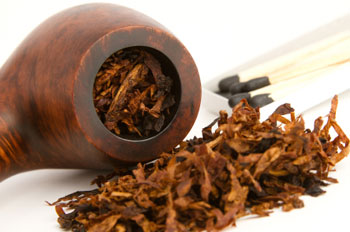 Matthew asks of me these questions three, ere the other side he’ll see: 1. Is there a big difference between using matches and lighter for pipe tobacco? What type of light should be used? 2. What are your opinions on the 2011 Balkan Sobranie 759 Showdown on an I think 1970s version 759? Were you invited to participate, what are your opinions on the 3 blends, did the judges get it right? Will you ever create an homage to this specific almost mythic blend? Thank you so much! I recently scored an old 2001 tin of Renaissance…which will be opened on a very special occasion!
Matthew asks of me these questions three, ere the other side he’ll see: 1. Is there a big difference between using matches and lighter for pipe tobacco? What type of light should be used? 2. What are your opinions on the 2011 Balkan Sobranie 759 Showdown on an I think 1970s version 759? Were you invited to participate, what are your opinions on the 3 blends, did the judges get it right? Will you ever create an homage to this specific almost mythic blend? Thank you so much! I recently scored an old 2001 tin of Renaissance…which will be opened on a very special occasion!
A: Wait. That’s only two questions. AIEEEEEEEEEEEEEE! Sorry. I think the Master of the Universe thing went to my head a little.
I think there is a slight difference in the tobacco’s flavor depending on whether it’s lit using matches or using a lighter, simply because of the difference in combustion temperature, but, that difference is slight, and unless you’re paying very close attention, is likely barely noticeable. Personally, I like to use matches because they allow me to tease a broader flame over the surface of the tobacco, toasting it a little first, then finally igniting it. It seems to allow the tobacco’s flavors to bloom a little, minimizing the sometimes harsh smoke that can come from the "charring light" if it’s too hot, or too focused. Try holding the match’s flame just above the tobacco, drawing it downwards with gentle puffs, at first. Try it, and see if you notice a difference! I also, when I have the time, and when I think about it, like to let the pipe sit for a few minutes after the first flame, and then relight. It brings out more of the tobacco’s sweetness, and softens the initial smoke.
There is something contemplative, something traditional feeling about using matches, and this seems to suit the mode of the pipe, to me. On the other hand, I use lighters, too, and can’t say that my smoking experience has been ruined by them. As long as you’re not using one of those ridiculous torch things, you’re probably okay.
The 2011 Throwdown was based on a very late tin of Gallaher’s produced 759, made sometime in the 1980s, which was very different from the old 759 that was produced by Sobranie. (Some of this is discussed in my recent columns Balkan Sobriety and Ghost Busting.) The participants were given the almost impossible task of attempting to produce something close, using current ingredients, to a tobacco with close to 30 years of age under its belt. Then, the judges had the almost impossible task of deciding which of these new blends came closest, in spirit I suppose, to the original. I can only imagine that it was nerve-wracking for all involved, but also a great deal of fun. Yes, I was invited to participate, but had too many projects on my plate to wade through those waters again. (Read on.) Whether or not any of the blends is close to the original sample I can’t say, and it probably doesn’t matter, since some are enjoying the results of the blenders’ efforts, and that’s what’s important.
As far as my own homage to the 759, yes, I have thought about doing one, and even more importantly, I already did it in 2003. Here’s what I wrote about this subject six years ago.
A couple of things come to mind. First, there was 759 and there was 759. The blend went through some changes during its life, and not every vintage is like every other. Too, while many have claimed to "clone" or "replicate" particular blends, I have never once found one of these copy-cats to successfully reproduce one of the old blends. In most cases, they’re not even really close.
During the time I was developing the Classic Collection, a friend opened a 4-oz tin of 759 from the 60s and shared it with me. When I first stuck my nose in it, I was surprised by the impression of perique in the blend. I’m sure the blend didn’t actually contain Perique, but the age had created a very Perique-like note in the tin aroma, and in the taste.
So, I came home, and went to work developing what was to become Blackpoint. Interestingly, I opened a three year old tin of Blackpoint last night, and was thrilled to find that some of the mustiness (in a good way) that I recall from that old 759 had begun to develop. I think the blend may actually be somewhat similar to the old stuff, thought, certainly not a copy, per se. Only time will really tell. However, I’ve heard from a friend in Italy who, without previously knowing the inspiration for Blackpoint, felt that Blackpoint was similar in some respects to the old 759. Maybe I was on the right track with this one.
Later vintages of 759 seem to have been more dominated by Latakia. For those, I think Abingdon may be a little closer, though certainly not identical.
So, there it is. Blackpoint, which I created in 2003, was my impressionistic painting of a particular experience with an old tin of 759. I know the blends are not the same, and that Blackpoint will evolve into something quite different, just as that tin of 759 had evolved dramatically from its youth by the time I got into it. But, I enjoy that aspect of tobaccos. My goal, always, is to blend both for today and for tomorrow, but only time will truly tell if I’ve accomplished this with any of them. I think some will wear wonderfully, and am looking forward to experiencing them over time.
Keep ’em coming, folks. I need to continue to justify having my name on the door.
-glp
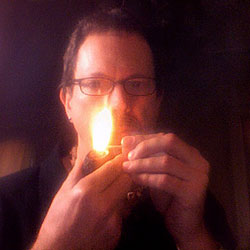
Since 1999, Gregory L. Pease has been the principal alchemist behind the blends of G.L. Pease Artisanal Tobaccos. He’s been a passionate pipeman since his university days, having cut his pipe teeth at the now extinct Drucquer & Sons Tobacconist in Berkeley, California. Greg is also author of The Briar & Leaf Chronicles, a photographer, recovering computer scientist, sometimes chef, and creator of The Epicure’s Asylum. |








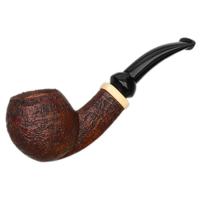

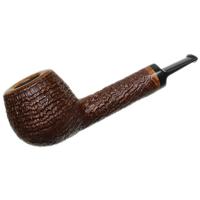





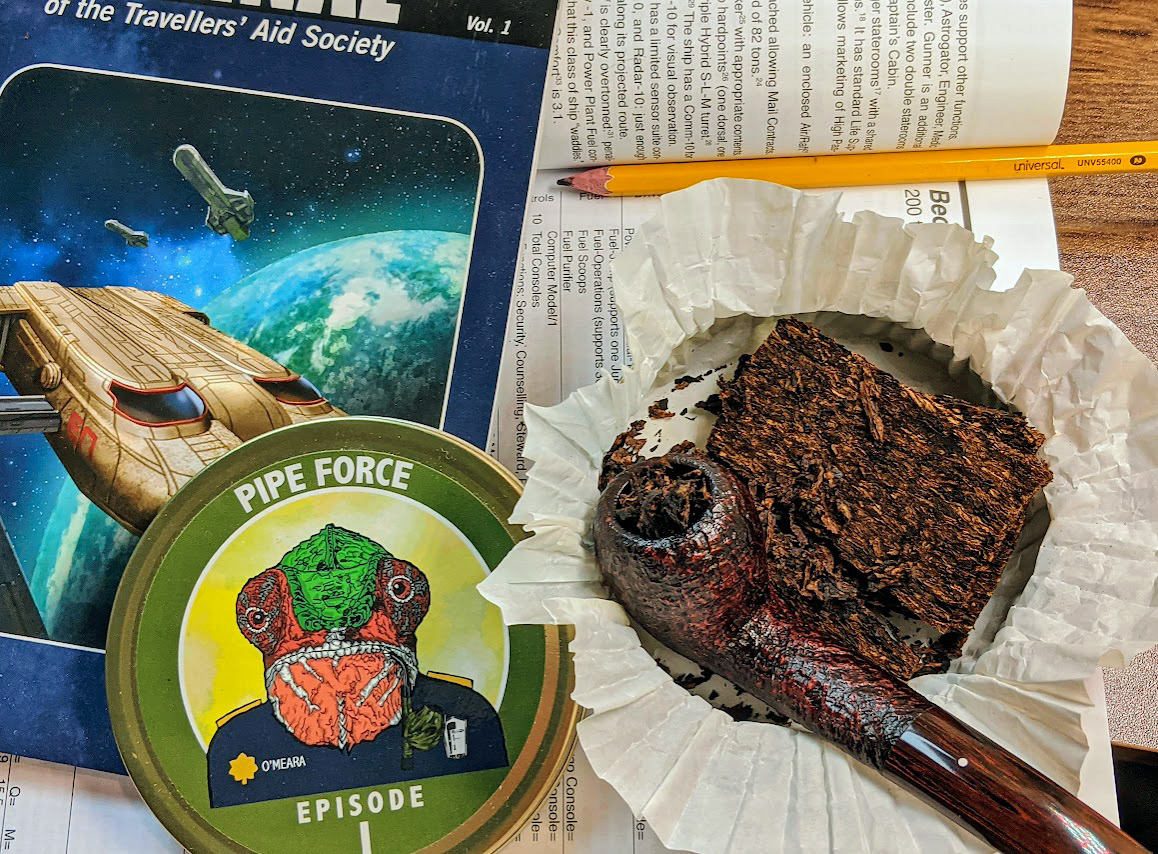
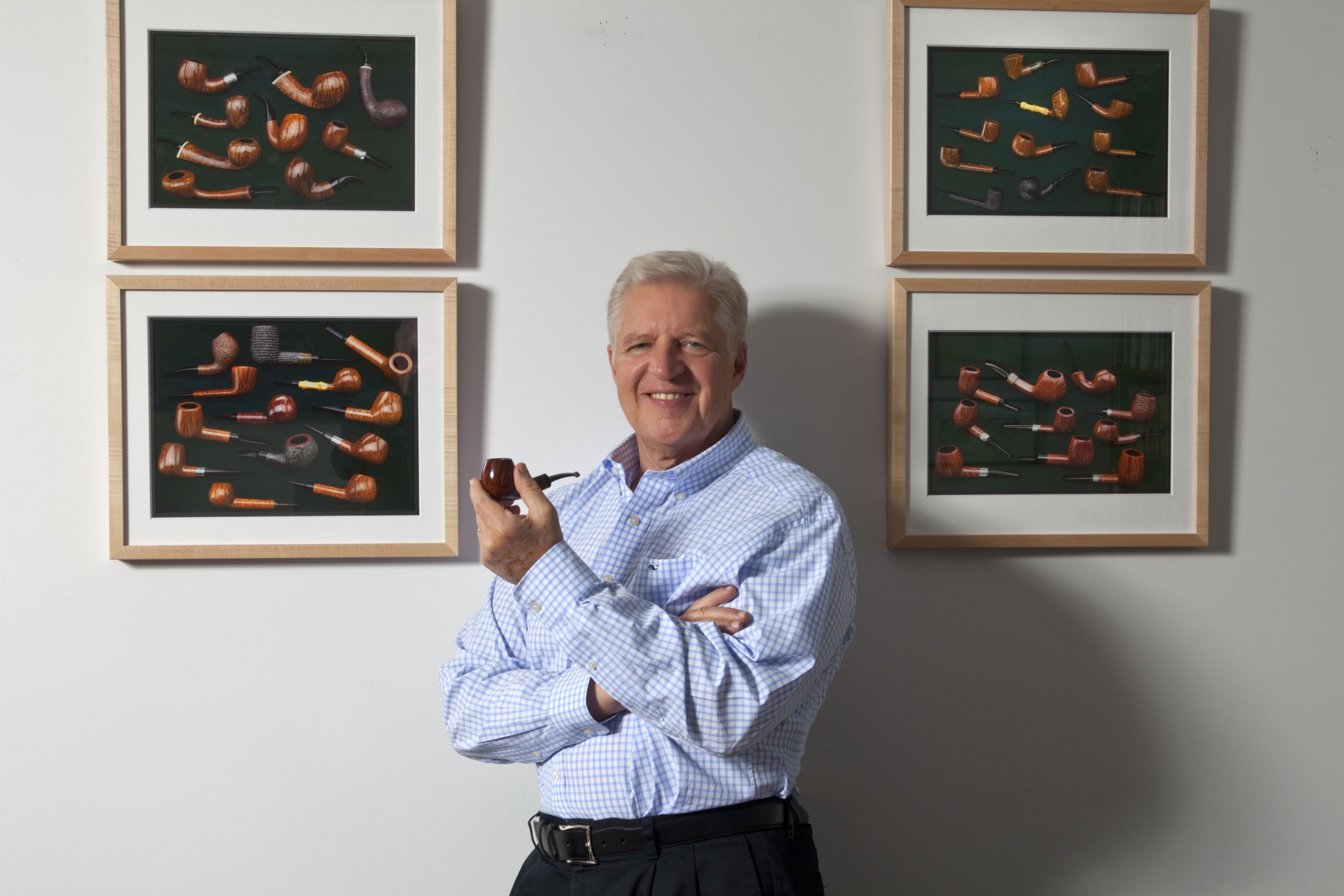





Mr. Pease, always a pleasure to get your take on the issues. I was hoping your sources would be more forthcoming on the reasons why Syrian Latakia will no longer be produced. It may be entirely academic now, given the political climate of that region, but I heard a rumor that the government was trying to protect a depleted species of tree required for the production of their Latakia.
That was true in 1960 when the first moratorium was put into effect. When production started again in the late 1990s, the demand was sufficiently low that I suppose there was less to worry about. And, yes, it seems they have other fish to fry these days.
After a 50 year hiatus, I wonder how many people in Syria even remember the procedures and peculiarities of Latakia production. Somehow I get the impression that doing it right was a non-trivial task; and the tricks of the trade were handed down from one generation to the next. After all, it’s not like the local junior college offers a Latakia 101 course.
Thank you Greg for your insight, your blends, and your willingness to spread a little wisdom onto us all. I have been reading from the beginning, and really look forward to each new installment. It would be great to shake your hand at Chicago this year!
– Tony Erickson
As always a pleasure to read Greg…so nicely written, soft, informative. Reading this while savouring a good bowl of Abingdon becomes even more pleasant. Thank you very much! Keeep up the great work!
Thank you! Very interesting questions and memorable, insightful answers. Pleasure to read.
I miss those “infamous” British purity laws…..
As always, the most cogent, concise, thoughtful and entirely entertaining column on PipesMagazine.com. Thank you Greg!
Dang – I wish you hadn’t made that confession about Blackpoint. Just watch; there’ll be a run on it now. Even if it’s just me buying 30 tins as a preemptive measure!
Rob